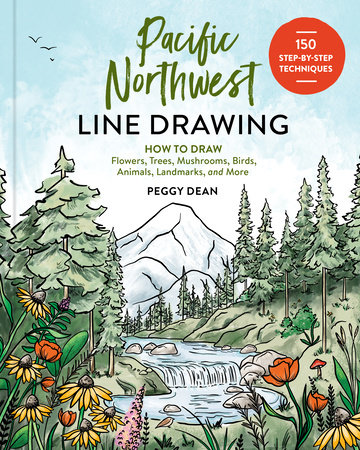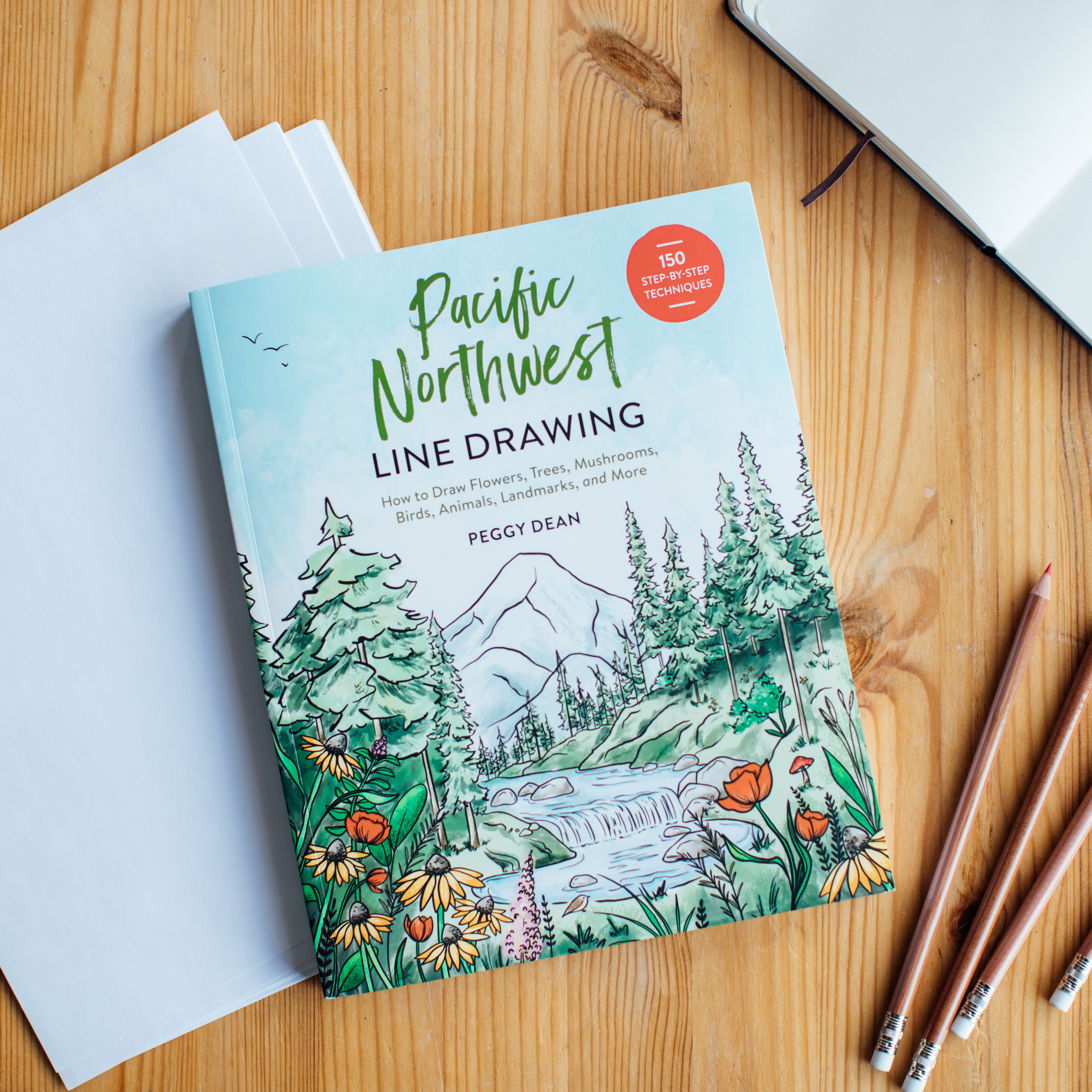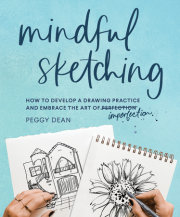IntroductionWelcome to the Pacific Northwest, a land of boundless beauty. The drawings on the following pages are a love letter to the region that has captured my heart and soul. I had the privilege of growing up exploring the Pacific Northwest’s diverse ecosystems, from the towering evergreen forests to the rugged coastline, from the majestic mountains to the tranquil rivers. I love how every season brings its own palette of colors, textures, and sensations—the scent of old-growth forests, where moss-draped branches of ancient trees touch the sky; the taste of wild berries plucked from the underbrush, bursting with the essence of summer; and the feeling of cool, misty rain on your skin, a gentle reminder of all the ways this region can inspire us.
This book is organized into three main sections: Flora, Fauna, and Landmarks of the Pacific Northwest. Each section contains step-by-step drawing instructions for various subjects, accompanied by fun facts that might surprise you! Whether you're a beginner or an experienced artist, feel free to start anywhere that inspires you. Remember, the goal is to enjoy the process and capture the essence of the Pacific Northwest through your own unique perspective.
About Line Drawing
The magic of line drawing often lies in simplicity—capturing the essence of a subject with just a few strokes. When I first started practicing line drawing, I quickly realized that it wasn’t about making perfect replicas of what I saw. It’s about capturing the way I wanted to interpret my surroundings. My lines were wobbly and imperfect, and as I progressed and my skills improved, I found myself returning to those wobbly lines because that’s what I liked most about drawing. It was freeing—not worrying about precision, and just enjoying the process.
In this book, you’ll be guided simply, line by line, and I encourage you to make it your own. We’ll explore different objects in nature, animals, and places that you can draw with only a few lines. Over my years of practice, I’ve discovered that mastering a few key techniques can significantly enhance your drawing experience and results.
Let me share some insights to help you on your line drawing journey.
Holding Your PenHow you hold your pen can dramatically affect the control and fluidity of your lines. For detailed work, try holding your pen close to the nib. For looser, more expressive lines, grip it further back. Experiment to find what feels most comfortable and natural to you.
Controlling Line WeightVarying line weight adds depth and interest to your drawings. While using pens with different tip sizes is one method, you can also achieve this by adjusting the pressure you apply. Light pressure creates thin, delicate lines, while heavier pressure produces bold, striking ones. Practice transitioning smoothly between these pressures to master dynamic line work.
Creating TextureTextures bring your line drawings to life. Experiment with techniques like hatching (parallel lines), cross-hatching (intersecting lines), stippling (dots), and scumbling (scribbled lines) to add dimension and detail. Each texture technique can convey different surfaces and materials. to see what works best for your subjects.
ApplicationsLine drawings have a unique way of adding charm and personality to everything they touch. You can incorporate them into handmade cards, journals and planners, standalone art pieces, craft projects, digital media and graphic design, marketing and branding, tattoo art, and even educational materials! The versatility of line drawing allows it to enhance virtually any creative endeavor.
Finding your flowOne of the most rewarding aspects of line drawing is entering the flow state while creating. This mental state of deep focus and immersion can be achieved by starting with simple subjects, allowing yourself to draw without judgment. Let your hand move freely and embrace mistakes as part of the process. Remember, the beauty of line drawing lies in its imperfections. Each line, whether deliberate or accidental, adds character and energy to your work.
Embracing ImperfectionsMy favorite way to draw is to jump in with a pen, embrace imperfections that come up, and capture the energy of the moment. Line drawing allows us to exist in a place of creative play, without the need for a ton of art supplies. I present line drawing literally—line by line— to help you view seemingly complicated objects in a simpler
form.
Through the step-by- step drawings in this book, you’ll see how each line build upon the previous one, culminating in a charming final piece.
Building ConfidenceAs you practice, your confidence in line drawing will naturally grow. Keep a dedicated sketchbook for your line drawings, filling it with quick sketches and detailed studies alike. Over time, you'll see your progress and identify the techniques and subjects you enjoy the most.
Every line you draw is a step towards improving your skills and developing your unique style. By focusing on simplicity, practicing key techniques, and embracing imperfections, you can create beautiful and meaningful drawings.
I encourage you to use this book as both a guide and inspiration as you embark on your line drawing journey. Remember, the most important thing is to enjoy the process and let your creativity flow.
So, grab your sketchbook and let’s get started. You don’t need to be a pro to enjoy this–just dive in and have fun. The Pacific Northwest is full of inspiration, and I can’t wait for you to see it through your own line drawings.
Copyright © 2025 by Peggy Dean. All rights reserved. No part of this excerpt may be reproduced or reprinted without permission in writing from the publisher.


















